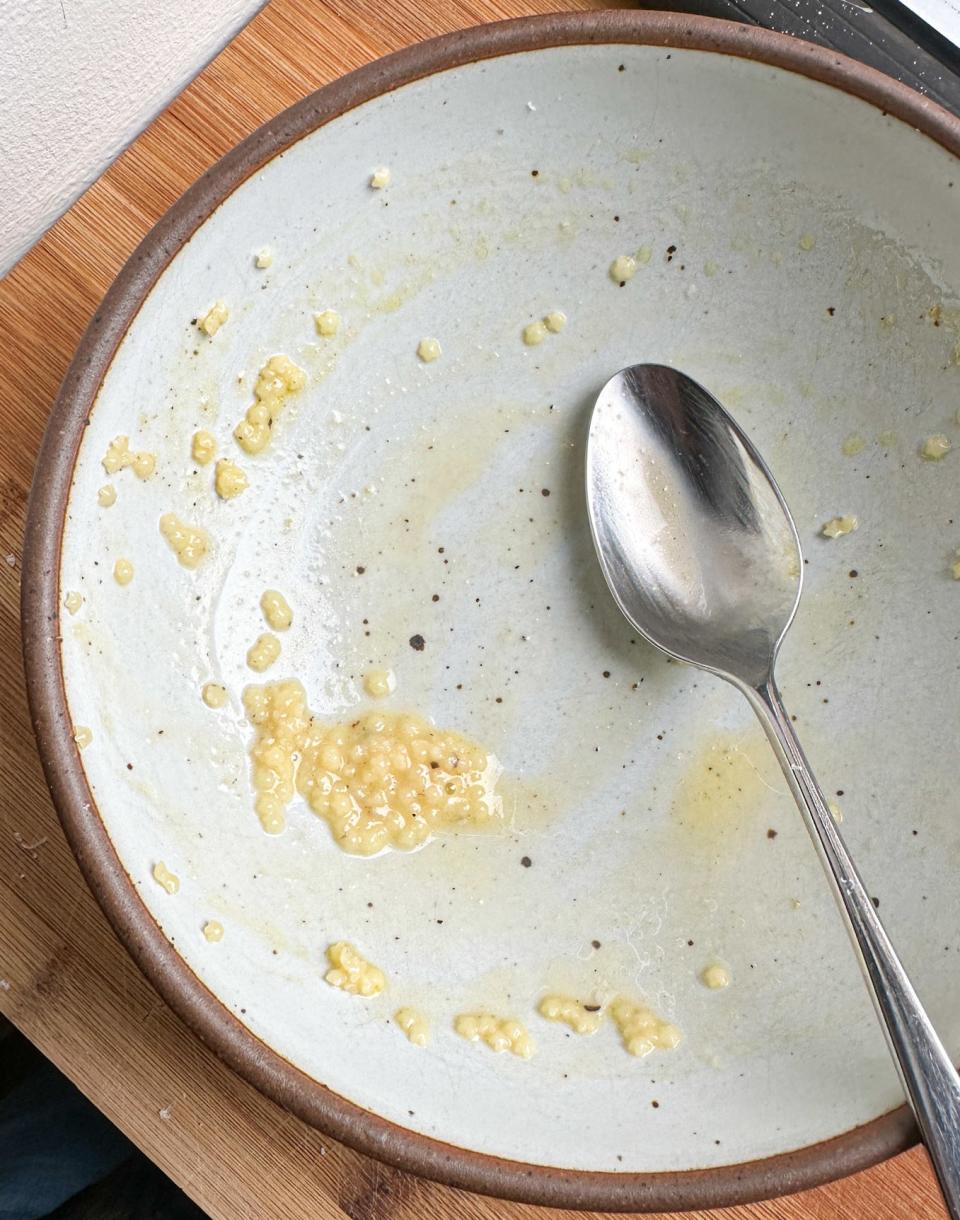People Are Just Now Learning That This 10-Minute "Feel Better Soup" Is Way More Universal Than We Realized, And It's Quickly Becoming My Go-To Winter Comfort Food
In early January, the discontinuation of one particular food product made headlines in a way that genuinely surprised me. Maybe the brand's PR team was just working overtime, or maybe people really were as "devastated" as multiple articles suggest, but either way, it was truly the only news I saw relayed across all my socials that fateful morning. I'm talking about the discontinuation of Ronzoni's beloved pastina — which I can confirm firsthand after a visit to my nearest grocery store.
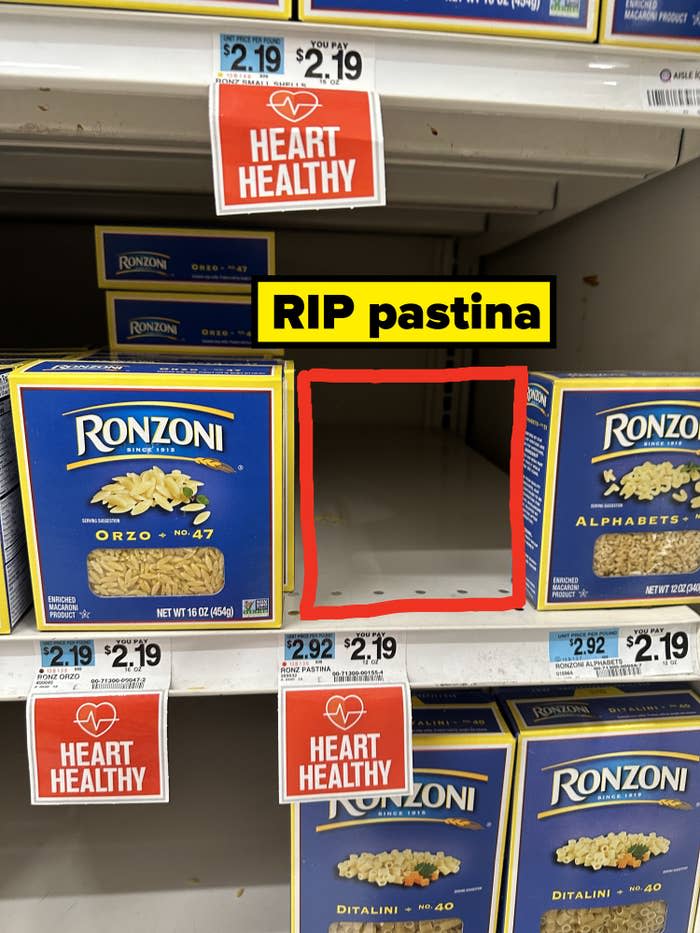
For many, pastina is sentimental. The itsy-bitsy star-shaped pasta was a first solid food for lots of babies, including me! But the widespread lamentation of this specific pasta shape from this specific brand is funny because...
...Barilla...still...makes it. ??
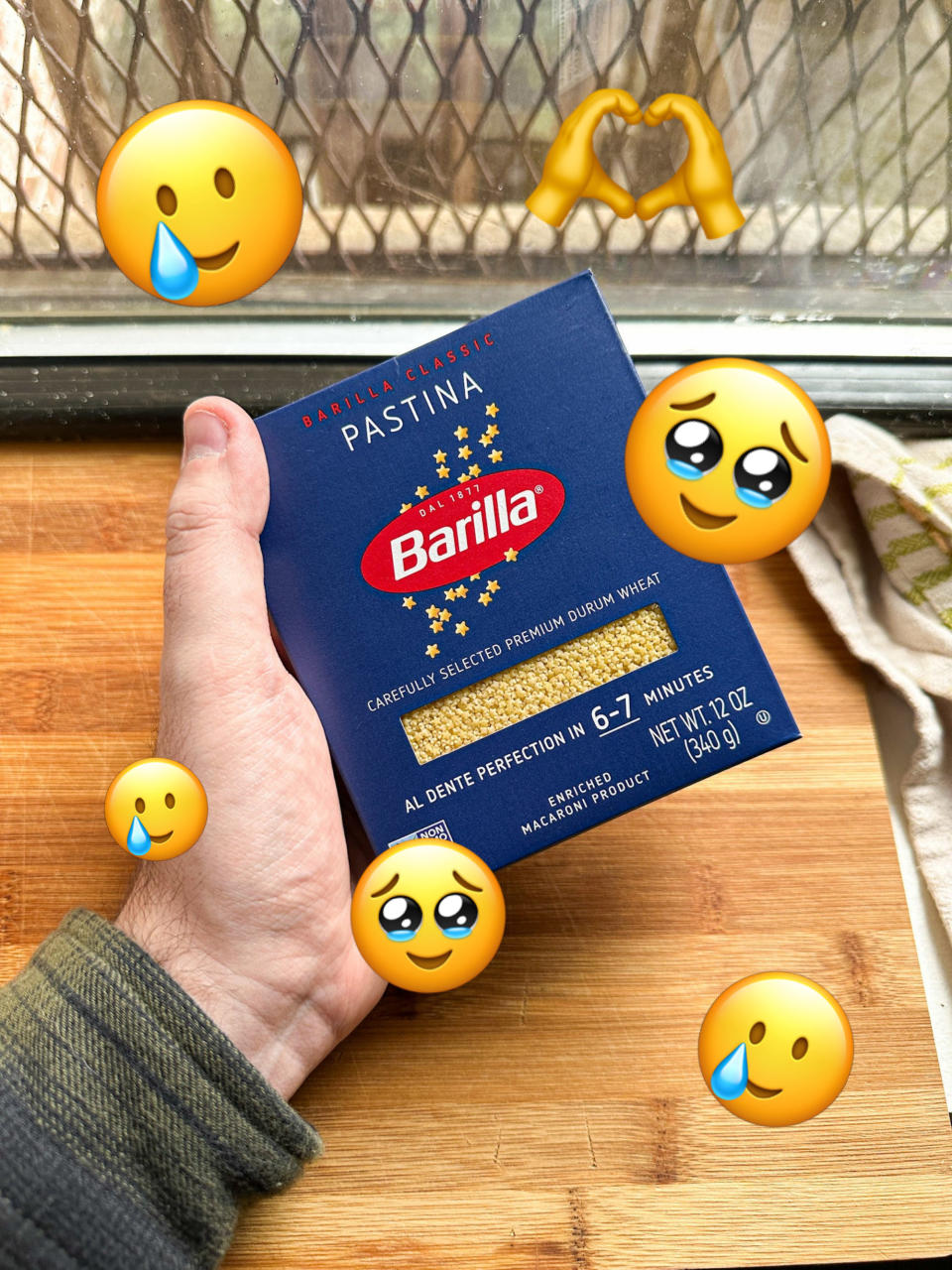
I digress. Believe it or not, I'm actually not here to talk about the discontinuation. Rather, I'd like to gush about the beloved "Italian penicillin" that's arguably the most delicious dish you could make with pastina. It's called, well...pastina. And no shade to chicken noodle soup, but for its simplicity, budget-friendly nature, and stick-to-your-bones heartiness, I think it might be the ultimate sick season comfort food.

HBO / Via giphy.com
Pastina is basically a thick, creamy soup made from boiling tiny pieces of pasta in liquid until it reaches a porridge-like consistency. Essentially, it's the Italian (and Italian American) answer to chicken noodle soup. Feel a cold coming on? Eat some pastina — hence the "Italian penicillin" of it all.
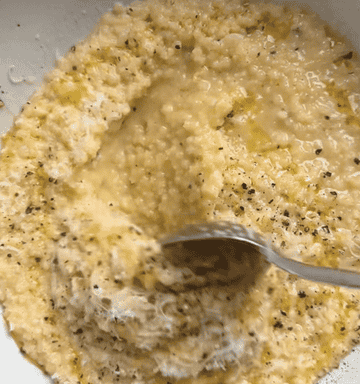
Ross Yoder
It's also been going mega-viral on TikTok since the weather turned colder. Search "pastina recipe" on the platform and you'll be met with hundreds of videos showcasing the myriad takes on the dish. Some use a tempered egg to lend creaminess. Others use milk as the main liquid. One TikToker even adds some finely-chopped veggies for a little nutrient boost, but the one common thread between all pastina-lovers is that everyone feels strongly about their personal spin on it — or their family's.

This brings us to my favorite version. Fun fact: I was first introduced to this dish by a high school friend; we'd often throw it together as a late-night snack, and I was immediately obsessed with it. I've continued to make it ever since, tweaking quantities and ingredients throughout high school, college, and adulthood. You can imagine my surprise when I realized, thanks to TikTok, that this "secret" family recipe I was making for nearly 15 years was actually a wildly popular sick food...but that's life, folks. Unique experiences are a myth.

Here's exactly how you can make the version I've fallen head over heels in love with, which just so happens to be vegetarian if you use vegetable stock or broth. First, the ingredients:
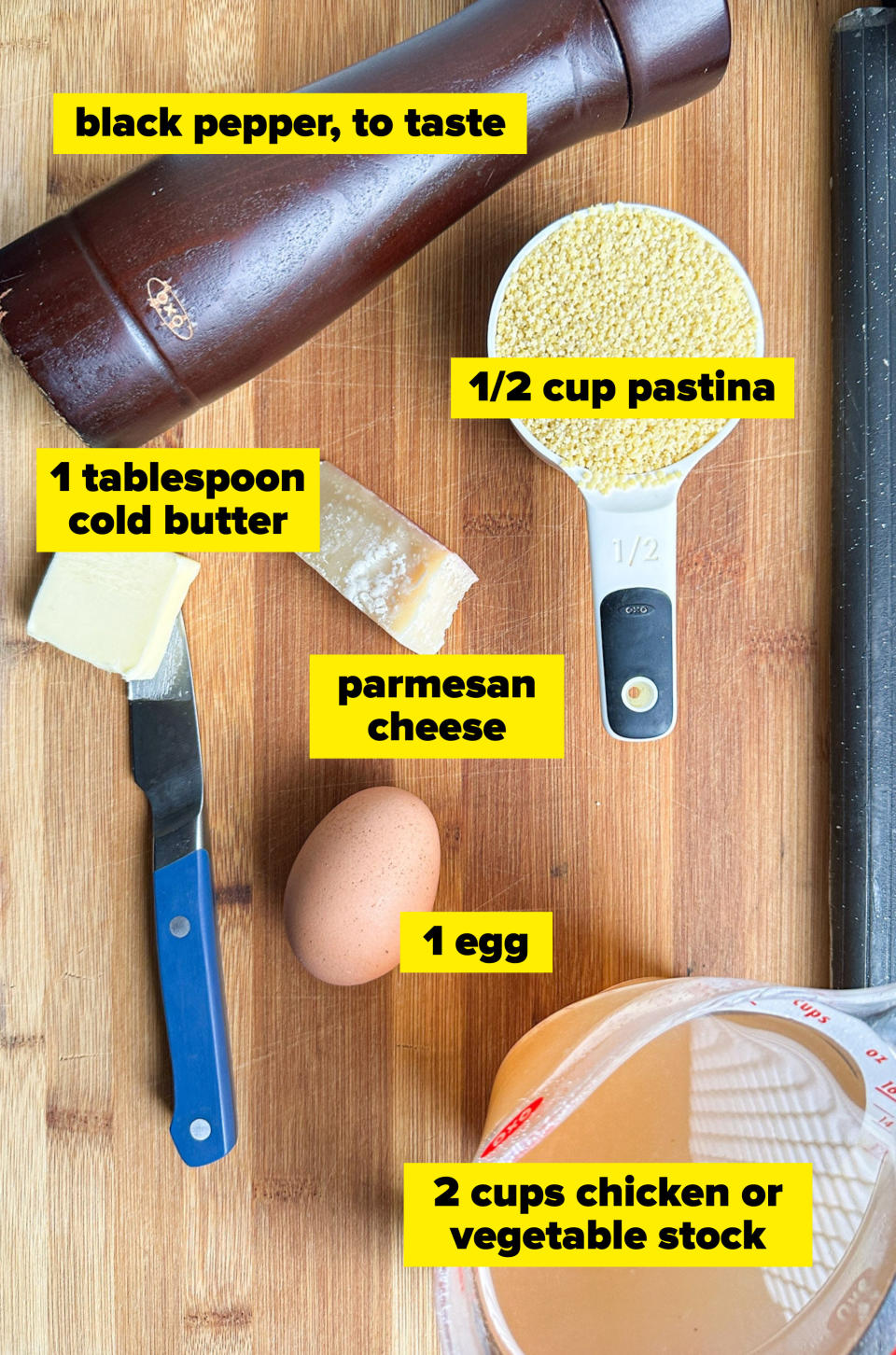
You'll end up with two servings if you use the exact quantities above, but the beauty of this recipe is that you can easily halve it if you'd like pastina for one, or double it for four servings. Hell, you can even triple it if you're cooking for a crowd or if you'd like some leftovers.
Also, importantly: There's really no need to only add half an egg if you're cooking for one. My advice would be to use one egg whether you're cooking for one or two people, and use two eggs if you're cooking for four or beyond.
STEP #1: Add your stock to a medium saucepan and bring it to a boil, then stir in your pastina and reduce the heat to low. Simmer for about 5-6 minutes, stirring frequently, until most of the stock is absorbed — but not all of it! (More on this shortly.)
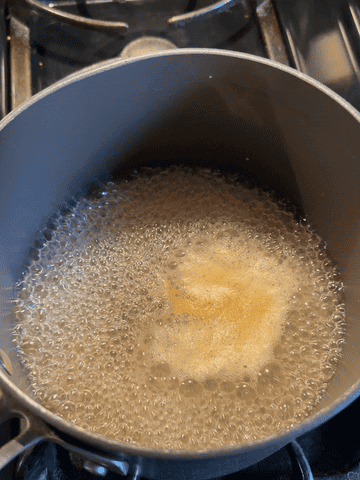
Ross Yoder
STEP #2: While the pasta simmers, beat the egg in a small bowl until completely combined.
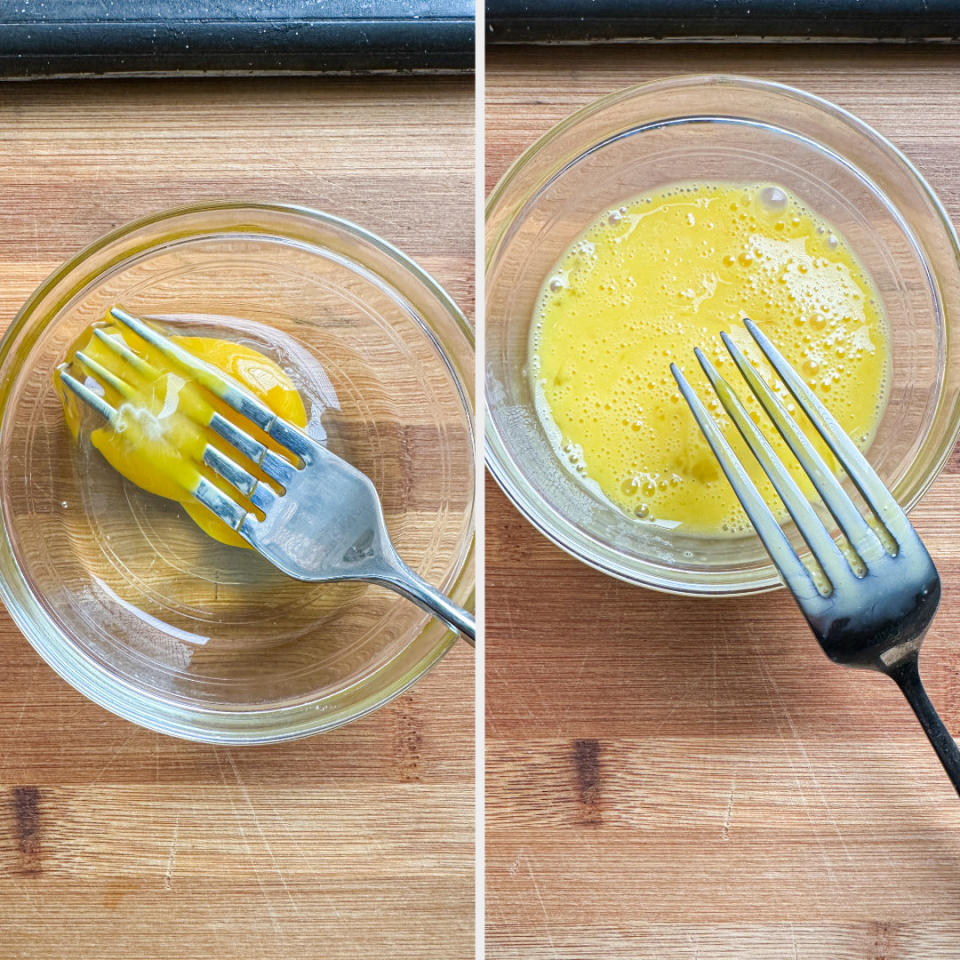
STEP #3: When you have just a bit of stock remaining in your saucepan, turn off the heat.
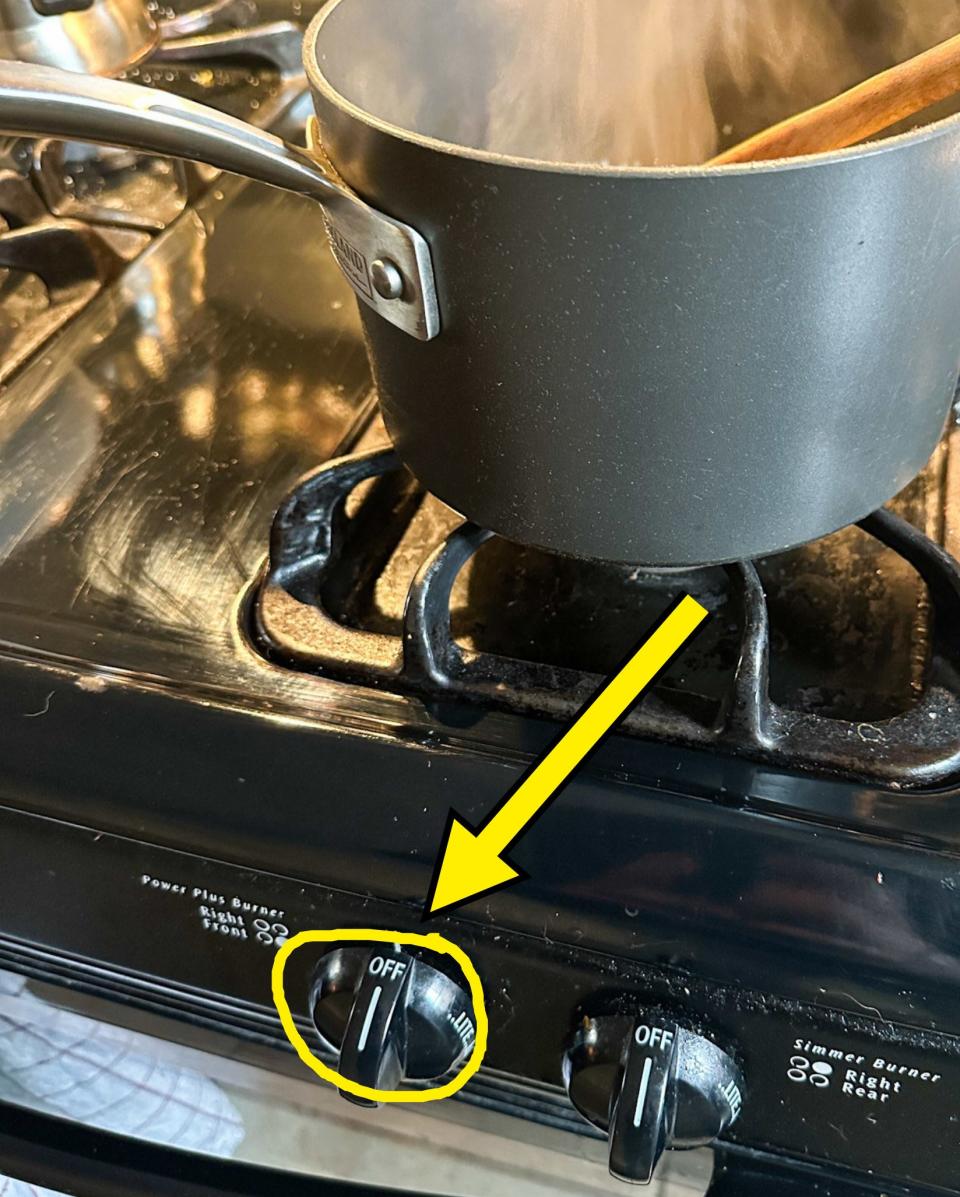
By "just a bit of stock," I mean that the pasta should be showing just underneath the surface of the simmering stock. For my visual learners out there, here's what I mean:
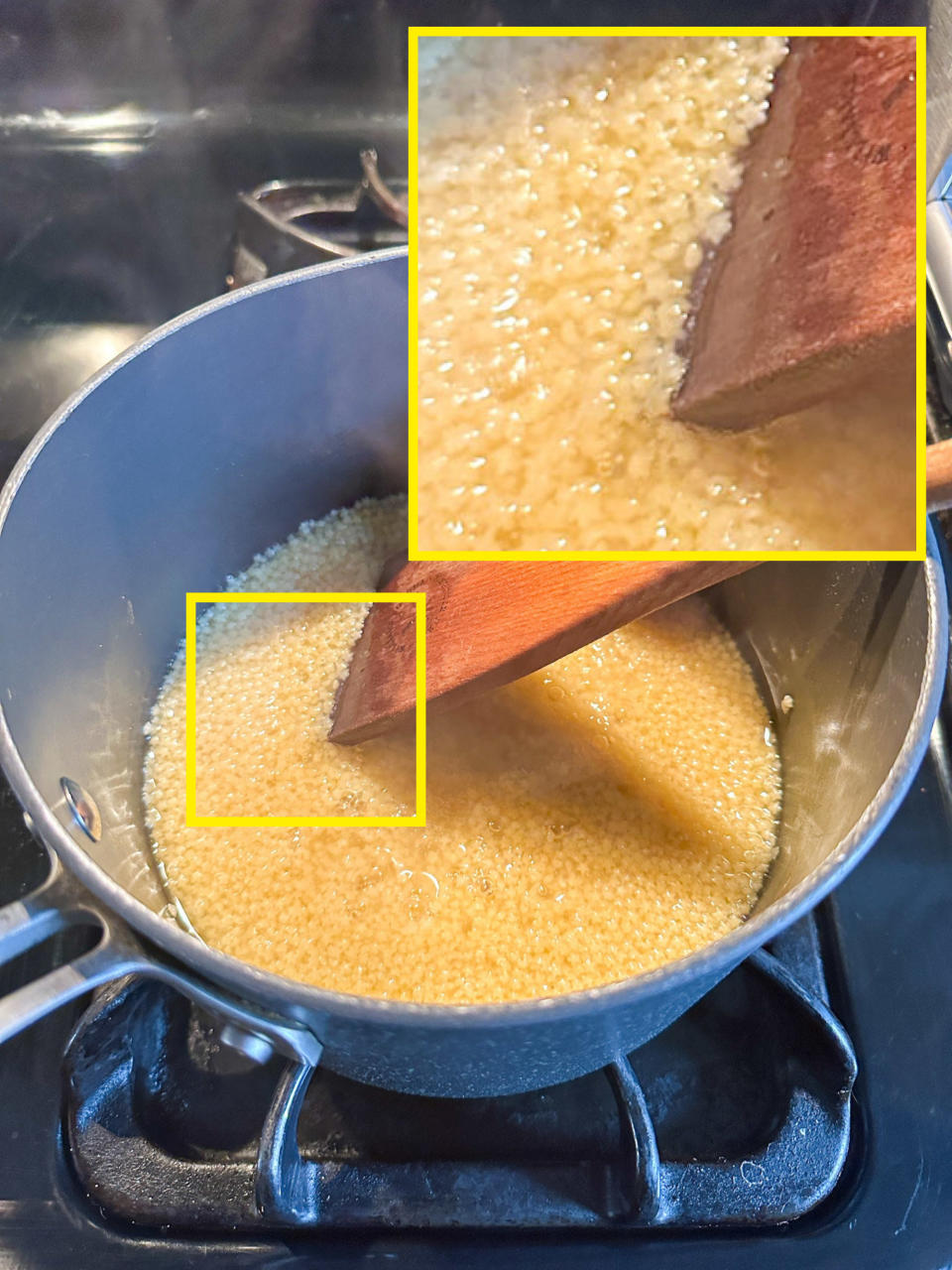
STEP #4: Mix in the remaining ingredients one at a time. Trust me, y'all — I've made a LOT of pastina, and I've found that the one-at-a-time method is the easiest way to make sure you wind up with a creamy, velvety bowl of deliciousness instead of scrambled eggs. First, stir in the butter until fully melted.
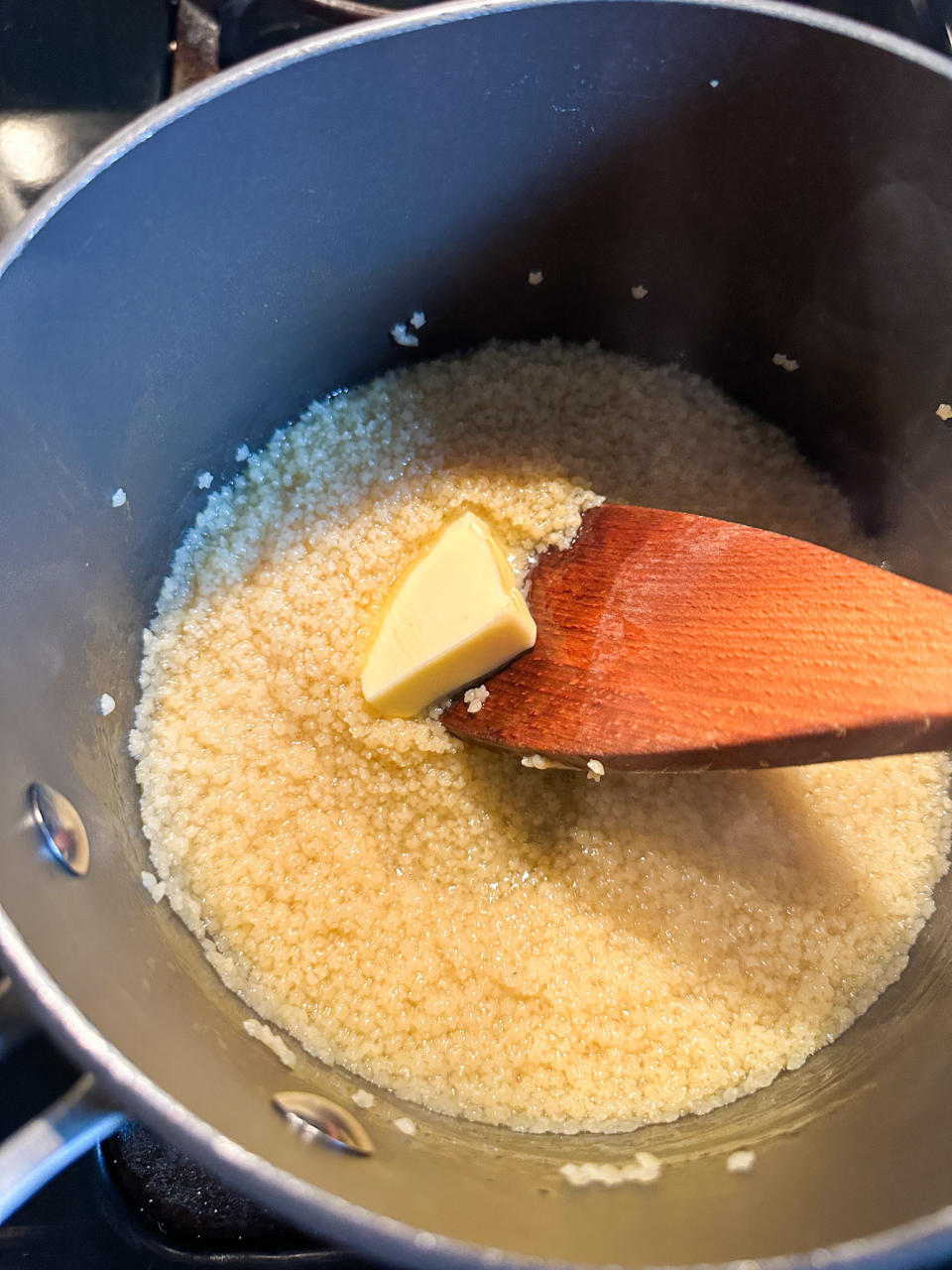
Next, the Parm. If you're grating it fresh, as I did, aim for about a 1/2 cup — but TBH, measure with your heart here. You cannot overdo cheese.
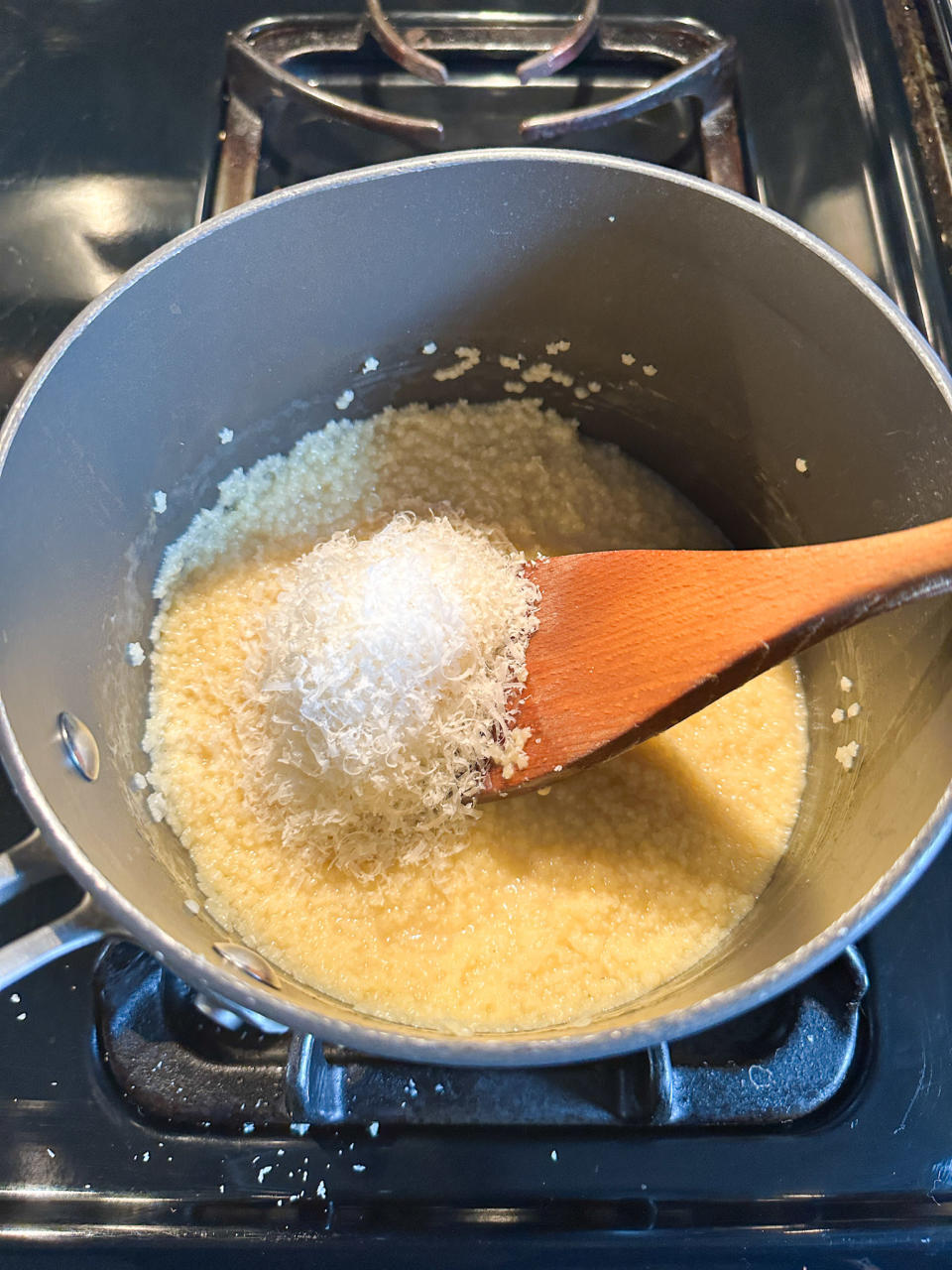
The added butter and Parm cool down the mixture just enough so you're not adding eggs to a boiling soup.
Last, the egg. As demonstrated by yours truly in this chaotic GIF, in which I use a crusty burner as my tripod, pour in the beaten egg while vigorously stirring the pastina mixture.

Ross Yoder
You'll wind up with glossy, clump-free results.
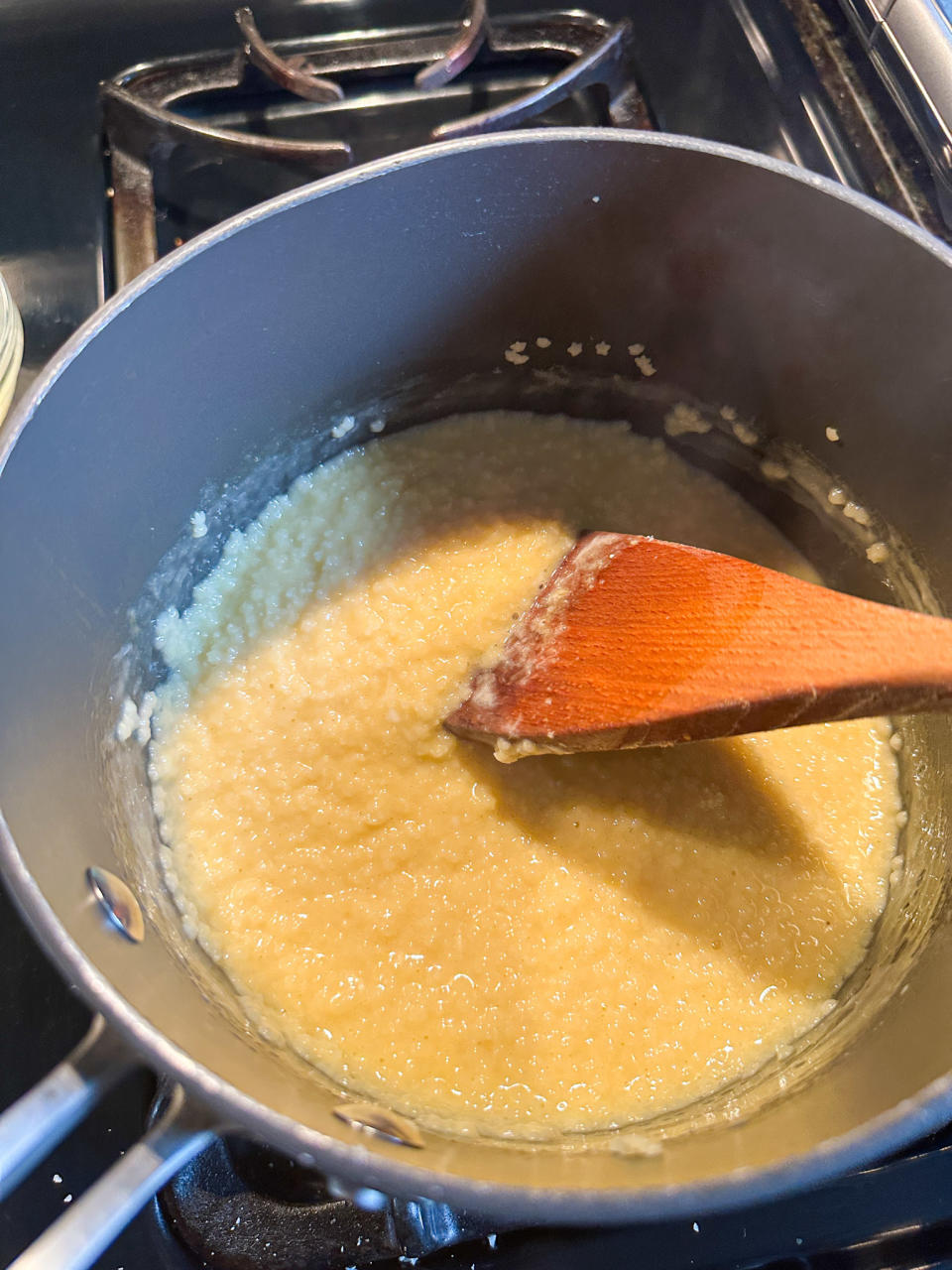
Depending on how salty your stock is, you may or may not need salt. I didn't need it with the brand of stock I used, but now is a great time to taste what you cooked up and add salt as needed, just in case.
That's it! To serve, ladle the pastina into bowls, and top with lots of black pepper and extra Parm.
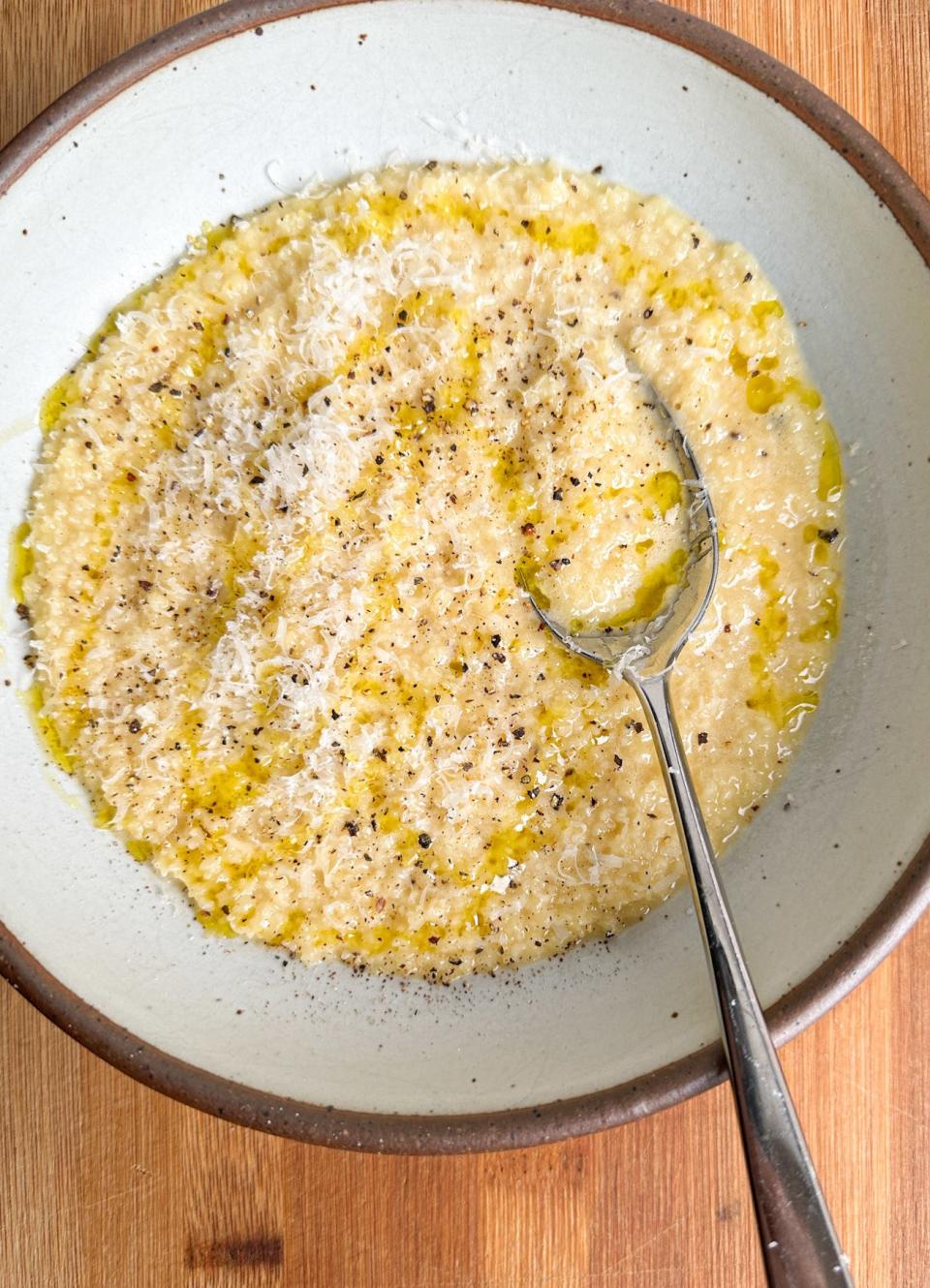
If you're feeling extra, a drizzle of olive oil definitely takes the whole dish over the top — but you do you.
Not to state the obvious, but yeah, it's absolutely delectable whether you're as sick as a dog or the epitome of health. IMO, "Italian penicillin" actually has a lot going for it when compared to most soups. It takes just about 10 minutes to make from beginning to end, it's a lot more filling, and not for nothing: Since it's nice and thick, it's even easier to eat than chicken noodle soup. Like, you can eat this while practically horizontal in bed and not worry about dripping hot broth all over your sheets. If that's not a cold season win, I don't know what is.

If the Great Ronzoni Discontinuation of 2023 affects your ability to find pastina at your local grocery store, I'll also let you in on a little secret. You can basically use whatever teeny, tiny pasta shape you can get your hands on, since "pastina" in Italian is a blanket category for any small pasta — not just the Americanized star shape. My go-to shape for pastina is actually acini di pepe, but it's your pastina, not mine. Make it as you wish. If you're a kid at heart and want to use alphabets, by all means, go for it.
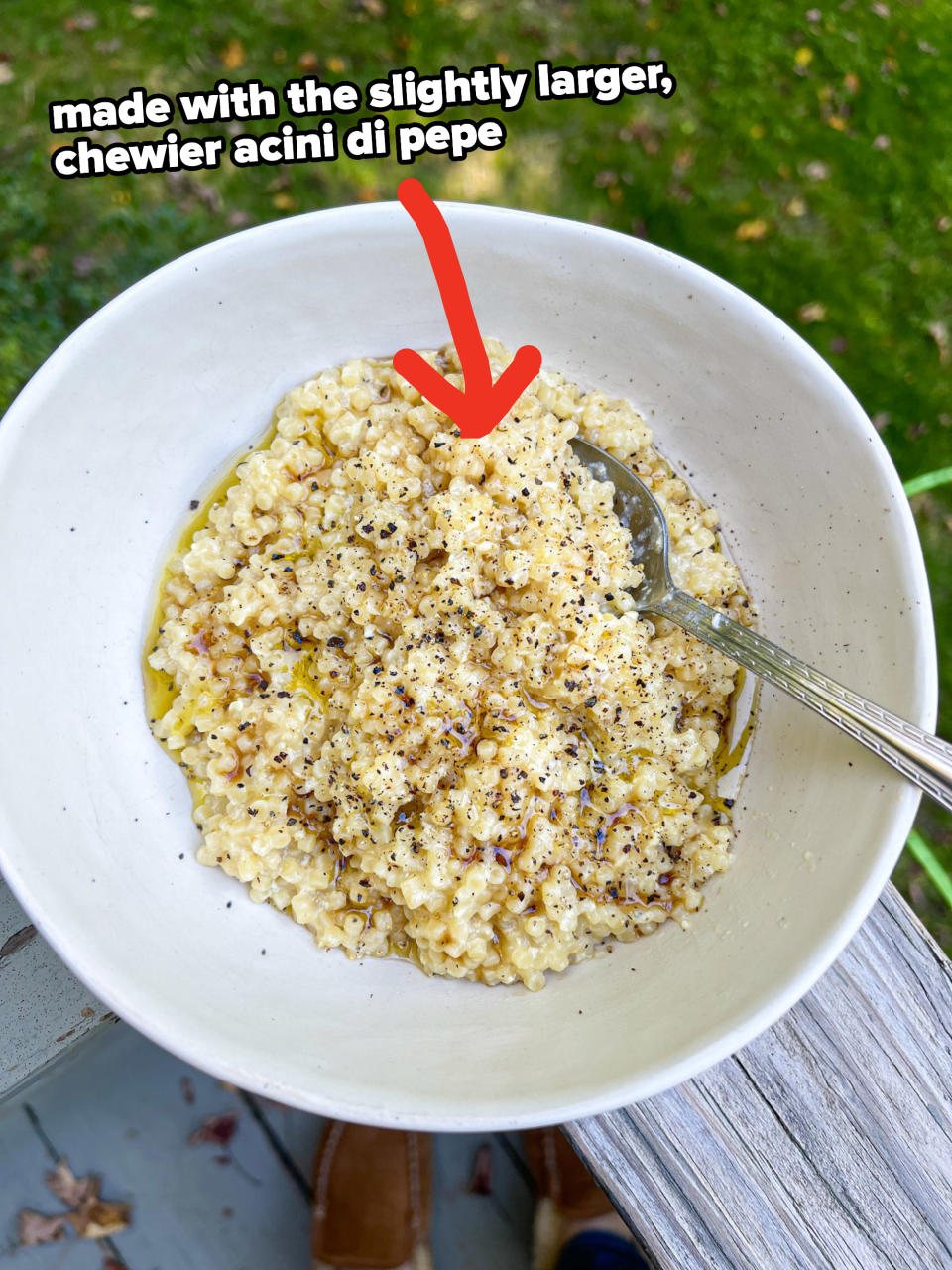
For those of you who read the recipe above and are now thinking to yourselves, "This is NOT the version I grew up with," never fear. As mentioned, pastina recipes tend to differ pretty heavily from person to person, so here are some equally-tasty variations that are totally worth trying, if you'd like:
? Brothy, No-Egg Pastina — Use double the amount of stock called for in the recipe above, omit the egg and butter, and wait to add your Parm and black pepper until you've ladled the soup into bowls for serving. This version is especially great for small kids, FYI!
? Pastina with Veggies — Sauté some finely diced onion, celery, and carrot in butter or olive oil until just softened before adding your stock and bringing everything to a boil.
? Chicken-y Pastina — Start with the method for either of the variations above (it's up to you!), adding pre-cooked shredded or cubed chicken to the boiling stock at the same time you stir in the uncooked pastina.
If you try this recipe or one of its variations in your own kitchen, let me know what you thought of it in the comments below or by DMing me. (And if you have a secret family method for your version of pastina, please, please, please tell me all about it.)
